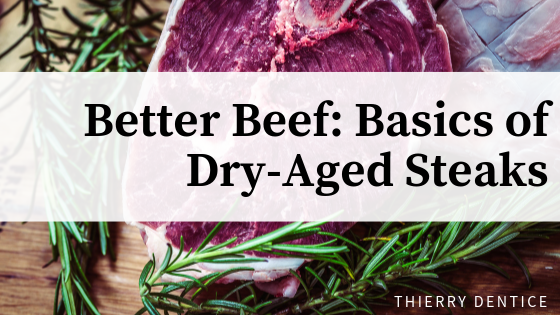A little age and beneficial microbes seem to do food a lot of good. That’s how we get so many varieties of delicious cheeses. If it weren’t for fermentation, we wouldn’t have wine. Red meat is no exception to this rule. Dry-aging renders cuts of beef more tender and flavorful (and, subsequently, more expensive), but how exactly does the magic happen?
In essence, dry-aging is a process of controlled decay. When exposed to oxygen, bacteria and natural enzymes within the meat come alive and begin to break down the molecular bonds, altering the flavor and texture of the cut. The meat hangs in a room with controlled-humidity and eventually becomes a host for a beneficial strain of mold, similar to blue cheese. Prior to serving, butchers and chefs trim away the mold, leaving behind a tender, nutty piece of meat.
The change in flavor can be attributed to the gradual moisture loss. The flavor becomes more concentrated as water evaporates, but chemical changes are another reason for the enhanced flavor. Large, flavorless molecules break down into smaller, more flavorful ones. The best cuts for dry-aging are ones that have a good protective covering of bone and fat, which leave less surface area that needs to be trimmed away later. Good contenders for the process include bone-in New York strip and ribeye.
How long does it to dry-age beef? The ideal time comes down to personal preference, but according to some butchers, like Katie Flannery of Flannery Beef, the best time frame is between 30 to 35 days. Like cheese, the longer the product is age, the more pungent it becomes, taking on a flavor and aroma that is best described as “funky.” Flannery warns that dry-aged beef will smell remarkably like blue cheese when aged 60 to 90 days.
Such a premium product comes with an equally premium price tag. Through evaporation and trimming off the moldy exposed faces, one can lose up to 50 percent of the original weight of the primal. By the time the cut has been aged, the price approximately doubles to accommodate for the loss.
